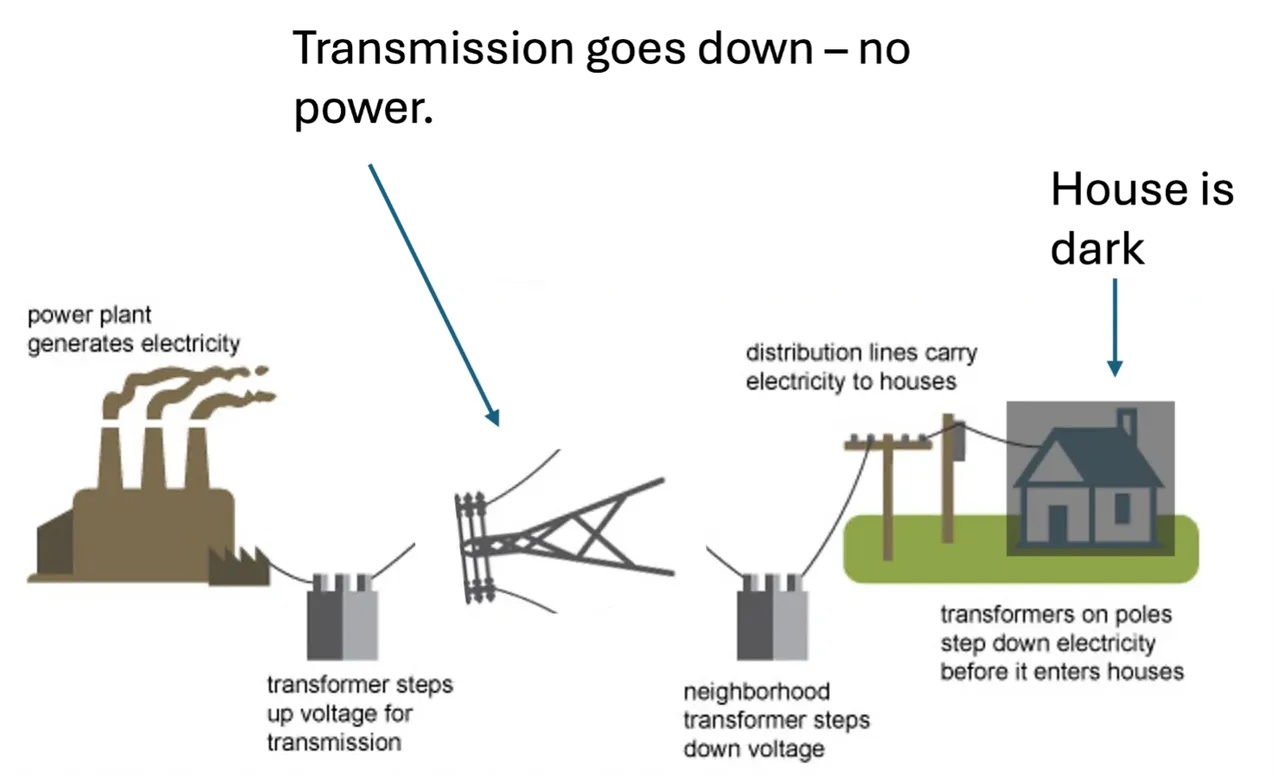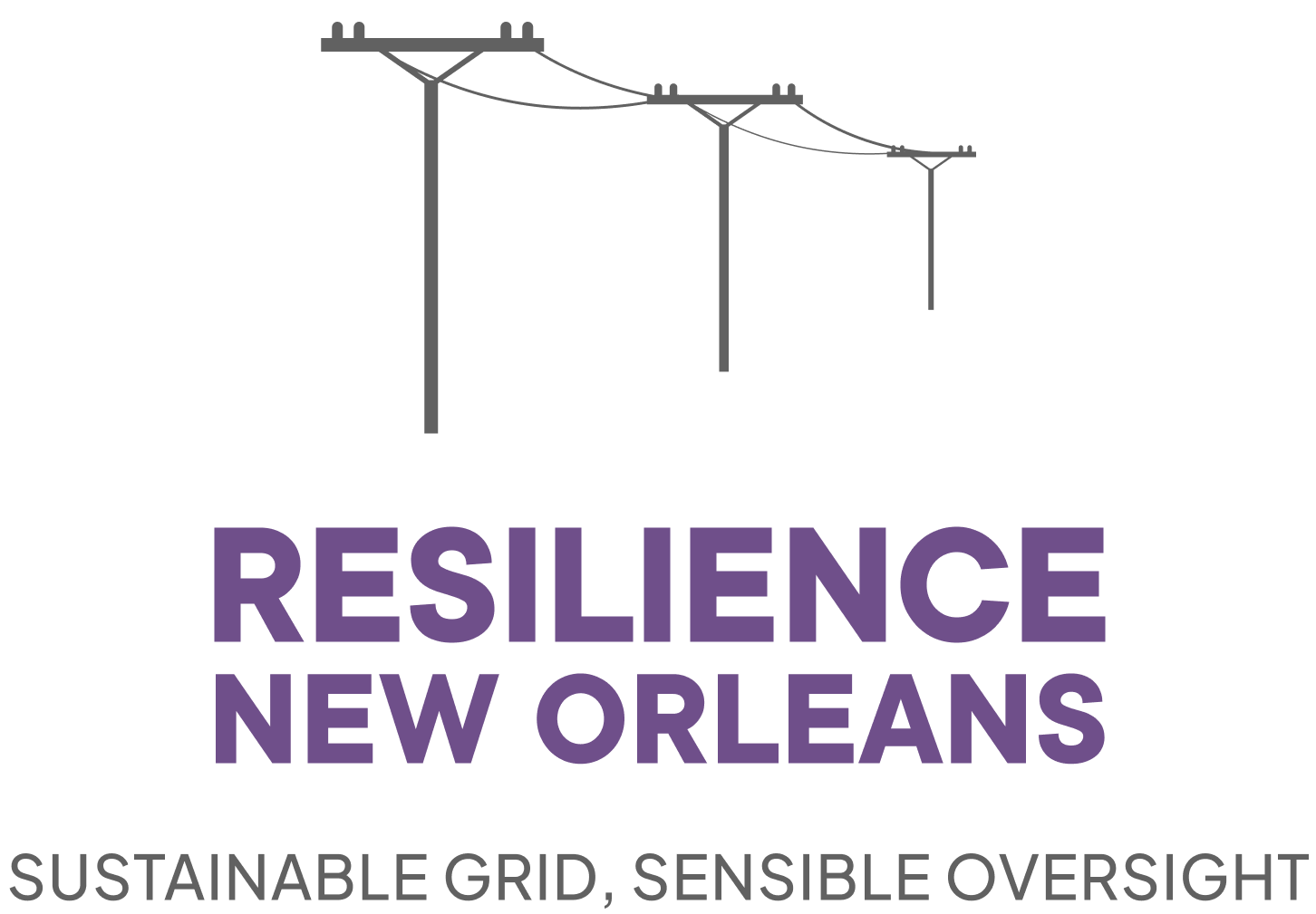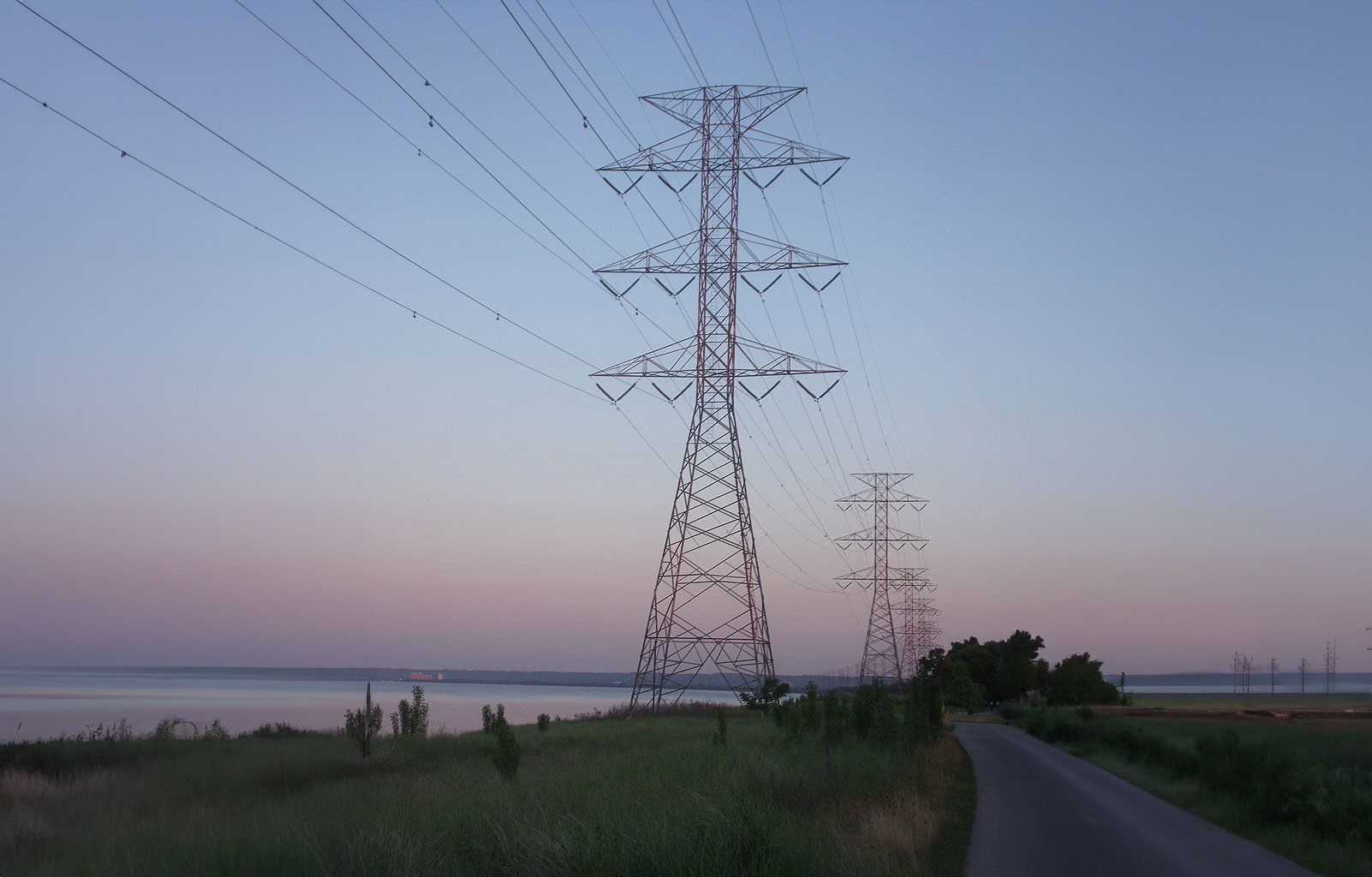The resilience of our electric transmission system is crucial, especially in areas prone to extreme weather events like our beloved New Orleans. It’s easy to say the transmission system is super important, but few really understand what it really means for our city. Now is an important time to think about this issue, because New Orleans is getting an upgrade due to Department of Energy Grid Resilience and Innovation Partnerships (GRIP) grant and the Louisiana Public Service Commission recently approved an infrastructure and resiliency plan for the state. So, let’s dig into what our transmission system does, and why it is so important to invest in it.
Transmission lines are what connect cities to power plants. They are very high voltage and allow power to travel long distances.
You’ve seen a transmission tower before. In New Orleans, we have approximately eight transmission lines that connect us to the outside world. Seven of these transmission lines are sourced from the west of New Orleans. The eighth line runs across Lake Pontchartrain from the north into New Orleans East.
Here’s a diagram of how electricity is delivered to you:

If the transmission line is broken, then no power gets to the house.

Transmission Modernization
The towers and lines need to be robust and uniformly strong across the region to ensure reliability and prevent outages. But there is a challenge — transmission lines owned by different companies are still connected. This is because the whole of the electricity system is like a beehive – it errs on the side of redundancy and connectivity to maximize reliability and access.
The drawback is that it sets up inequity when one part of the system is modernized while a downstream line is not. This is a problem for two reasons.
1. The Weak Link.
In transmission systems, resilience is related to structures’ wind-loading design capability. The system is only as strong as its weakest link. In a high wind weather event (Hello hurricane season!), it is important to have high wind rated transmission towers. In New Orleans, we have a few rated for 150 mph winds.
2. Longer Recovery Time.
Transmission tower failure is a big deal because replacing one takes a lot of work. There is no repair option. When a tower goes down, that’s it. Depending on the type and material, it can take two to three days on average to replace, and this time frame can vary significantly based on various factors. The logistics of storing and transporting these large structures add to the complexity.
Higher wind rated transmission lines means fewer outages and better resistance to weather events. Being close to the coast, New Orleans is at the end of the transmission line so our only connection to outside power is dependent on our eight lines and one small power plant.
The GRIP upgraded transmission line approved for New Orleans’ (see details here) is expected to enhance grid flexibility and improve the resilience of the power system by hardening ~97 structures that should avoid power interruptions.
Our electric transmission system will be more robust against growing threats of extreme weather and climate change. We deserve resilient and reliable power!
Finally, for the energy nerds still reading, here’s a little more on transmission systems.
Bird Poo is Nightmare Fuel for Engineers
Birds like to nest on transmission towers. Insulators are a critical piece of hardware that allows a high voltage electric line to be safely connected to the transmission tower, which is typically constructed of metal, a good conductor. Over time, and many meals, bird excrement builds up on the insulator and can create a continuous conductive surface that frees the electricity from the wire into the wild! Electricity peeps call this an “arc flash”. Guano no bueno.

